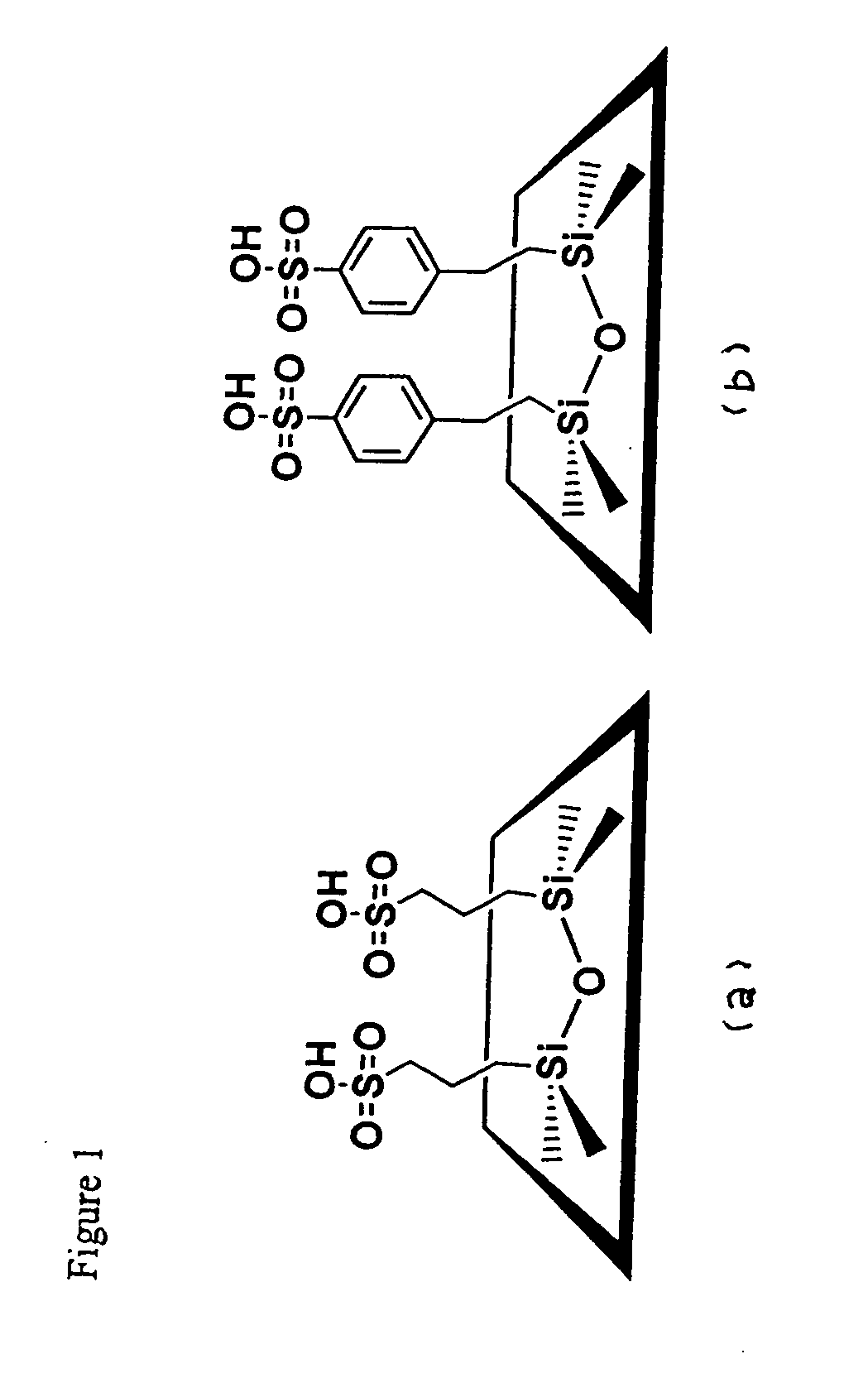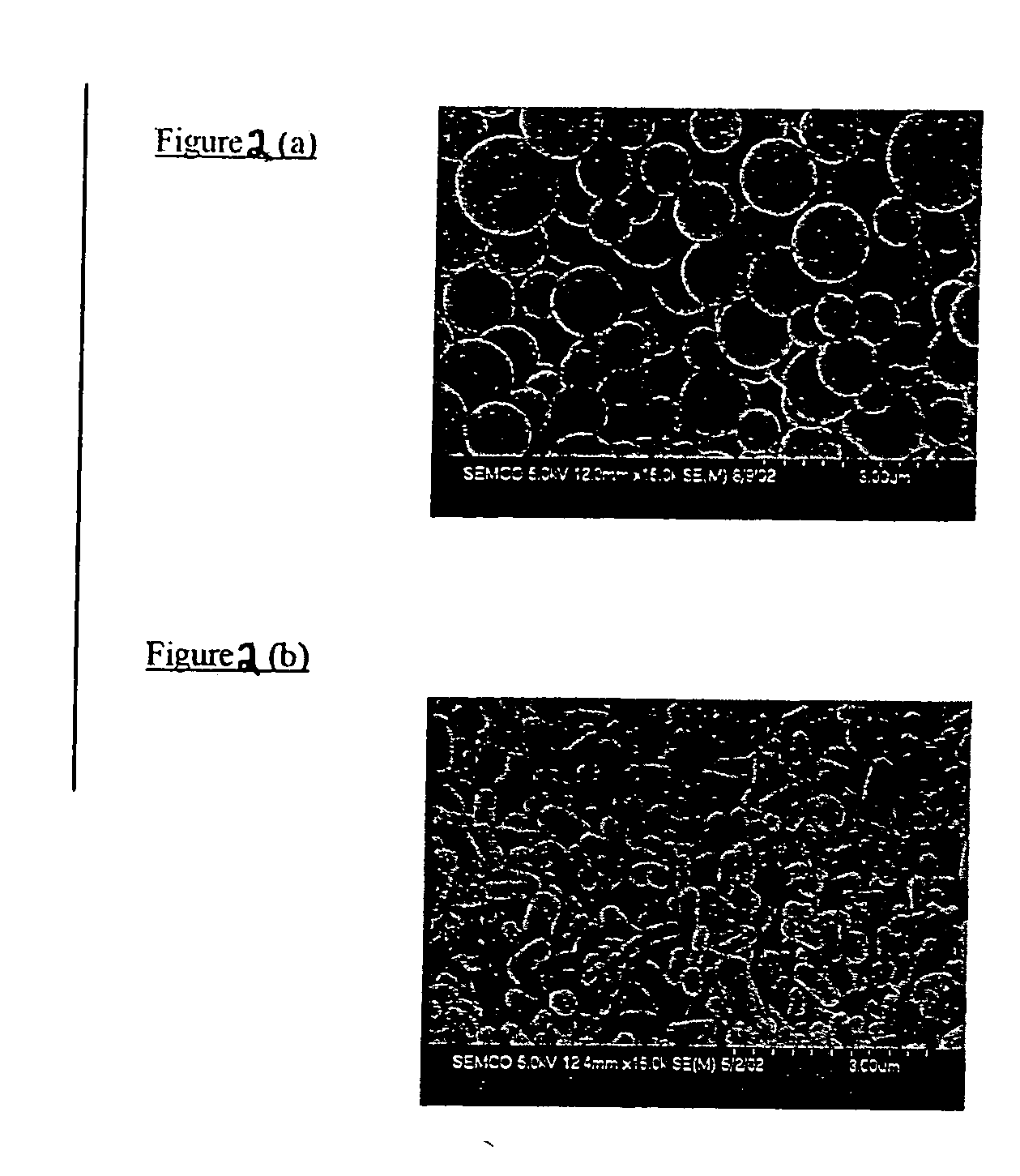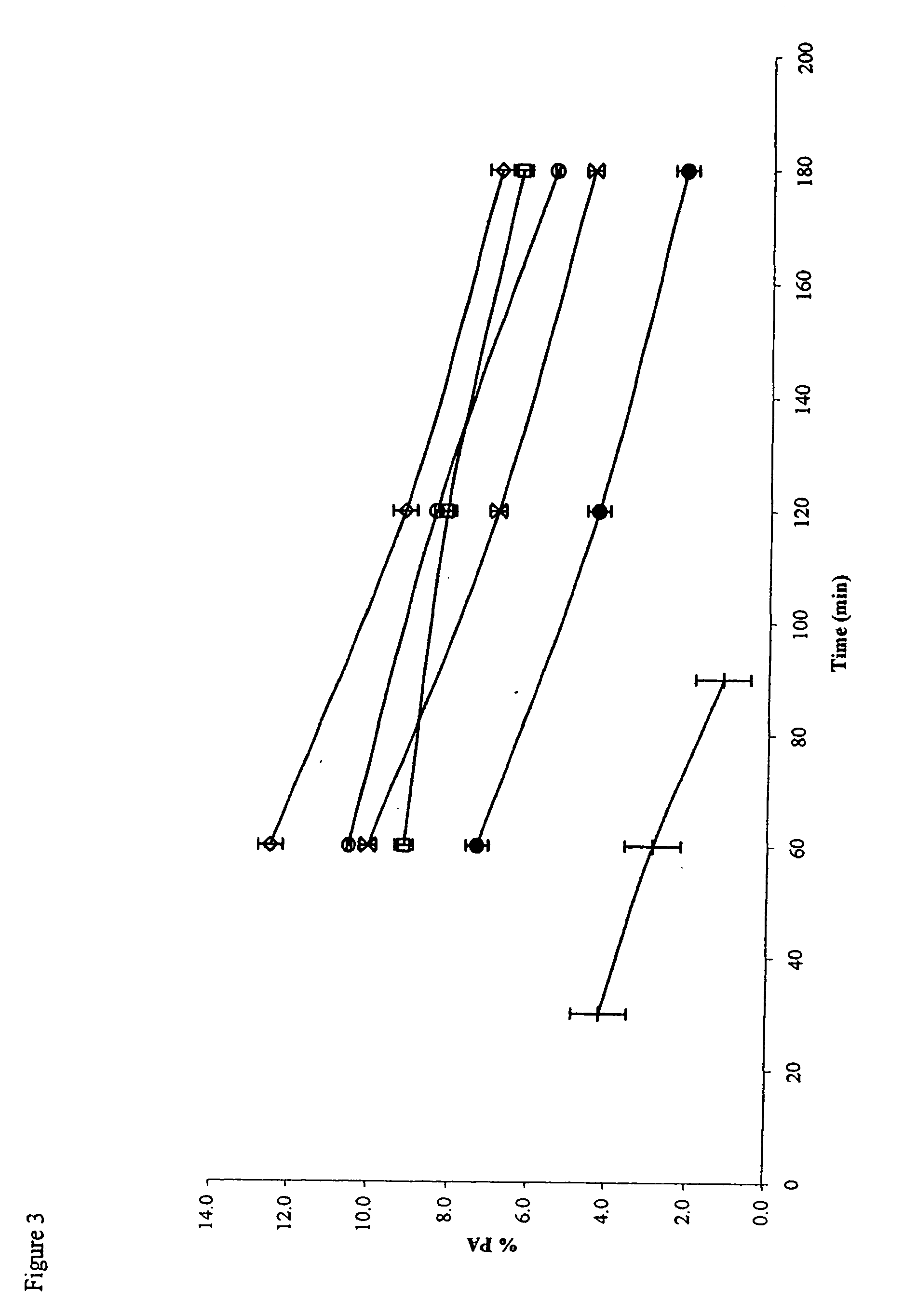Use of functionalized mesoporous silicates to esterify fatty acids and transesterify oils
a technology of functionalized mesoporous silicates and functionalized mesoporous silicates, which is applied in the direction of fatty oil/acid recovery from waste, fatty oil/fat refining, fatty acid chemical modification, etc., can solve the problem that biodiesel is currently not cost competitive with conventional diesel fuel, and the difficulty in separating the corresponding catalyst, etc., to achieve the effect of effective conversion of fatty acid-containing oil feedstocks
- Summary
- Abstract
- Description
- Claims
- Application Information
AI Technical Summary
Benefits of technology
Problems solved by technology
Method used
Image
Examples
example 1
CDAB-SO3H
[0038] A molar composition of 0.08 TEOS, 0.02 MPTMS, 0.0275 CDAB, 0.89 EtOH and 2.94 H2O was used to synthesize CDAB—SH. The amino surfactant was dissolved in an alcohol-water mixture prior to addition of the TEOS-MPTMS mixture. The mixture was aged for 24 hrs at room temperature under continuous stirring. The resulting solid product was filtered and air-dried. The amine template was extracted by refluxing in boiling EtOH for 24 hrs. The thiol groups were oxidized with H2O2 (2.04 g / g solid) in a methanol-water mixture. The suspension was stirred at room temperature for 24 hrs followed by washing with EtOH and H2O. The wet cake was acidified in 0.1 M H2SO4 for an additional 4 hrs before being washed thoroughly with H2O. The product was then dried at 393 K.
example 2
SBA-15-SO3H
[0039] SBA-15-SO3H was prepared by dissolving 4 g of Pluronic® surfactant (P123 or L64) in 125 g of 1.9 M HCl at room temperature under stirring with subsequent heating to 40° C. before adding TEOS. Approximately 45 min. was allowed for prehydrolysis of TEOS prior to addition of the MPTMS-H2O2 solution. The resulting mixture with a molar composition of 0.0369 TEOS, 0.0041 MPTMS, and 0.0369 H2O2 was stirred for 24 hrs at 40° C. and thereafter aged for 24 hrs at 100° C. under static conditions. The product was collected and subjected to the same extraction method as previously described.
example 3
SBA-15-ph-SO3H
[0040] SBA-15-ph-SO3H mesoporous silica functionalized with benzenesulfonic acid groups was synthesized as follows. Pluronic® P123 surfactant (4 g) was dissolved with stirring in 125 ml of 1.9 M HCl at room temperature. After complete dissolution, the solution was heated to 35° C. TEOS (8.76 g) was added dropwise to the solution at a constant temperature of 35° C. After a TEOS prehydrolysis of 45 min, 2.66 mL of 2-(4-chlorosulfonylphenyl)ethyltrimethoxysilane (CSPTMS) solution in methylene chloride (50%, Gelest) was added dropwise (to prevent phase separation). The resulting mixture was stirred for 20 hrs at 35° C. following by aging at 95° C. for another 24 hrs. The molar composition of the mixture for 4 g of copolymer was: 7.4 TEOS: 1 CSPTMS:48 HCl:1466 H2O. The solid was isolated via filtration, washed extensively with methanol and dried in the air. The surfactant template was removed by suspending the solid material in ethanol and refluxing for 48 hours. The sulfo...
PUM
| Property | Measurement | Unit |
|---|---|---|
| diameter | aaaaa | aaaaa |
| temperature | aaaaa | aaaaa |
| diameter | aaaaa | aaaaa |
Abstract
Description
Claims
Application Information
 Login to View More
Login to View More - R&D
- Intellectual Property
- Life Sciences
- Materials
- Tech Scout
- Unparalleled Data Quality
- Higher Quality Content
- 60% Fewer Hallucinations
Browse by: Latest US Patents, China's latest patents, Technical Efficacy Thesaurus, Application Domain, Technology Topic, Popular Technical Reports.
© 2025 PatSnap. All rights reserved.Legal|Privacy policy|Modern Slavery Act Transparency Statement|Sitemap|About US| Contact US: help@patsnap.com



